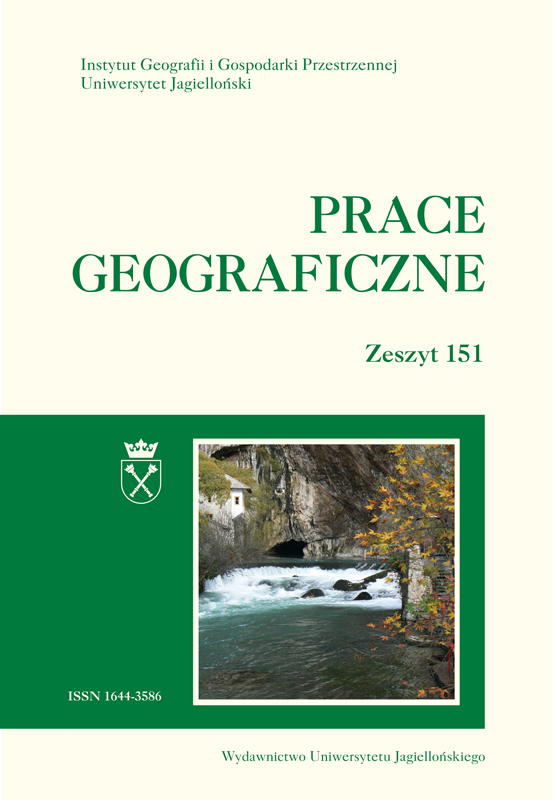Odpływ rzeczny w Bieszczadach Wysokich w latach 1961–2015
Streamflow in the High Bieszczady Mountains (1961–2015)
Author(s): Karolina MostowikSubject(s): Physical Geopgraphy, Recent History (1900 till today)
Published by: Wydawnictwo Uniwersytetu Jagiellońskiego
Keywords: Discharge; runoff changes; mountain catchments; Eastern Carpathians;
Summary/Abstract: Water circulation in flysch mountains is characterized by a substantial role of runoff due to the mountain topography and thin slope covers, which result in low retention rates. Climatic conditions determine streamflow and runoff regime, thus changes in precipitation and temperature could affect water circulation patterns. Stream runoff analysis in the upper San catchment up to Solina Lake is interesting due to semi-natural features of the catchment (minimum human impact) and potential climate changes affecting streamflow. However, the investigation of stream runoff in the High Bieszczady Mountains has not yet been studied extensively with the use of the longest data series. The research objectives were to (1) characterize stream runoff in the High Bieszczady Mountains; and to (2) identify and assess changes in stream runoff for two periods: 1961–2015 and 1986–2015 on the example of the San river (Dwernik stream gauge) and the Solinka river (Terka stream gauge). Runoff variability was assessed using monthly flow coefficients and coefficients of multi-year variability of monthly flows. Minimum, mean and maximum streamflow records were analysed for trends with the nonparametric Mann-Kendall test in different time intervals: months, half-years and years. Streamflow regime of the San and Solinka rivers is characterized by the highest runoff values with low variability over a long period in spring months (March, April) due to snowmelt, whereas the lowest runoff occurres in August. Mean streamflow trends in the period 1961–2015 were not significant and indicated runoff fluctuations. However, the second period (1986–2015) revealed significant increase in mean and minimum runoff in the winter half-year (mainly January–March) and slight decrease in runoff in the summer half-year (particularly September). These changes are similar to trends observed in other mountain catchments in Europe, which have been explained by recent changes especially in temperature but also in the type and sum of precipitation. Trends identified in the selected catchments as well as more frequent water deficits indicate a high demand for streamflow trends assessment in the other parts of the Polish Carpathians in the context of potential changes in groundwater resources.
Journal: Prace Geograficzne
- Issue Year: 2017
- Issue No: 151
- Page Range: 75-91
- Page Count: 19
- Language: Polish

